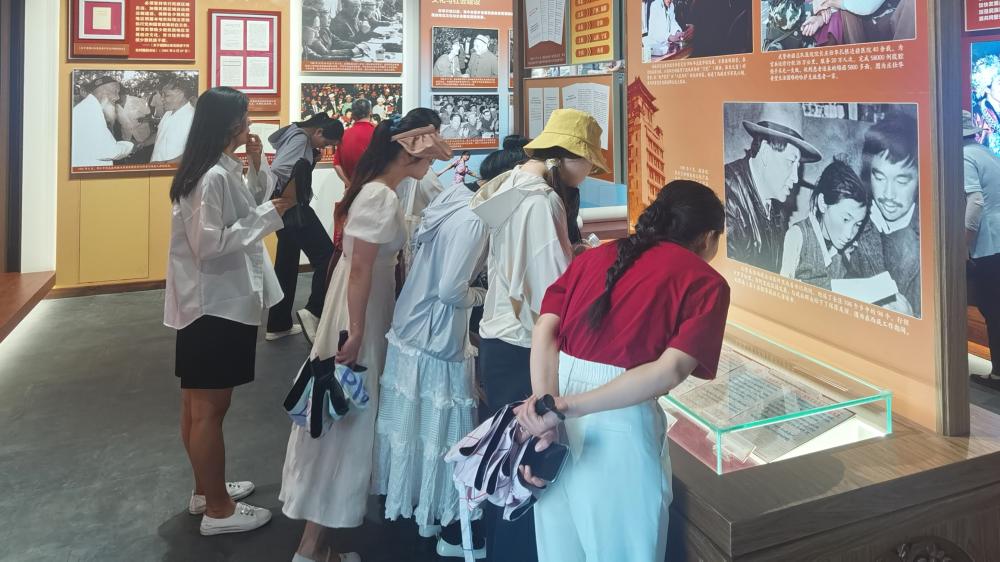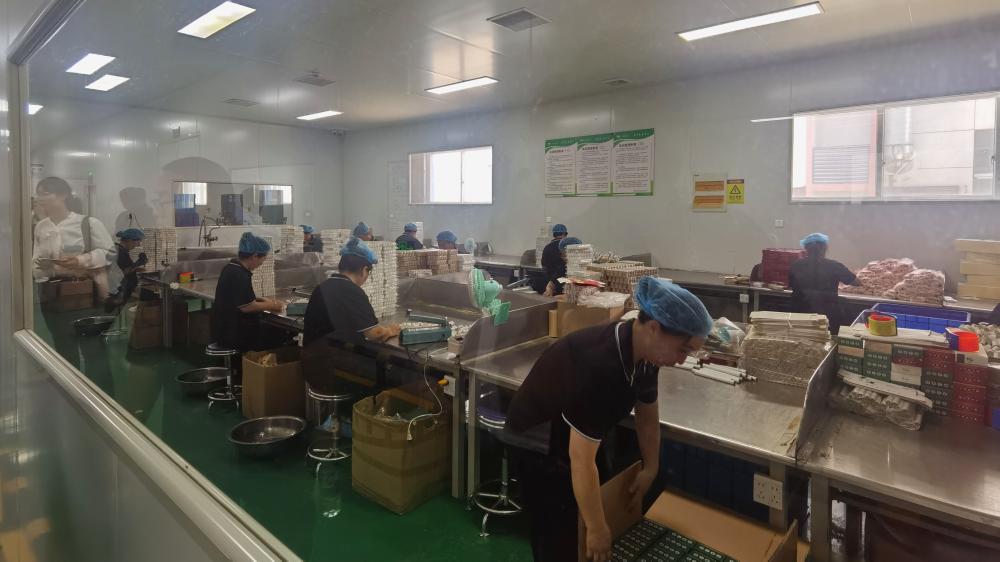Communism began to spread among ethnic minorities from here, active 100 years ago | group | communism
"Sing a mountain song to the party..." On the east side of Xidan North Street in Beijing, a melodious song can be heard from courtyard 33 of Xiaoshihu Hutong, which is quiet amidst the noise. Approaching July 1st, the reporter visited the former site of the Beijing Mongolian Tibetan School and coincidentally encountered a red song flash mob activity by students from the Central University for Nationalities. More than 30 young students from different ethnic groups are confessing their love to the Party with full enthusiasm and loud singing. After 100 years, young students who believe in communism gathered again in this small courtyard, which is a touching scene.
One hundred years ago in the autumn, in this small courtyard, a group of young ethnic minority students with the same passion gathered here and embarked on the revolutionary path under the guidance of revolutionaries such as Li Dazhao. The spread of communism among ethnic minorities began from this school.
Red song flash mob activity for students at Central University for Nationalities.
Mongolian youth see the light of hope
Beijing Mongolian Tibetan School is a school established by the Beiyang warlord government specifically for recruiting Mongolian and Tibetan students. In 1923, the school set up a junior middle school department. The first Mongolian party member of the CPC took the opportunity to recruit 39 Mongolian youth from Tumote Banner of Inner Mongolia to the school.
Our party's outstanding leader in ethnic work, Ulanfu, was among the first batch of students to be admitted to the junior high school department. Shortly after the start of school in the autumn, the progressive youth of the Mongolian Tibetan School took part in a series of revolutionary struggles against the land of Qingzhang and the restoration of official fees, which attracted the attention of Li Dazhao, one of the main founders of the CPC.
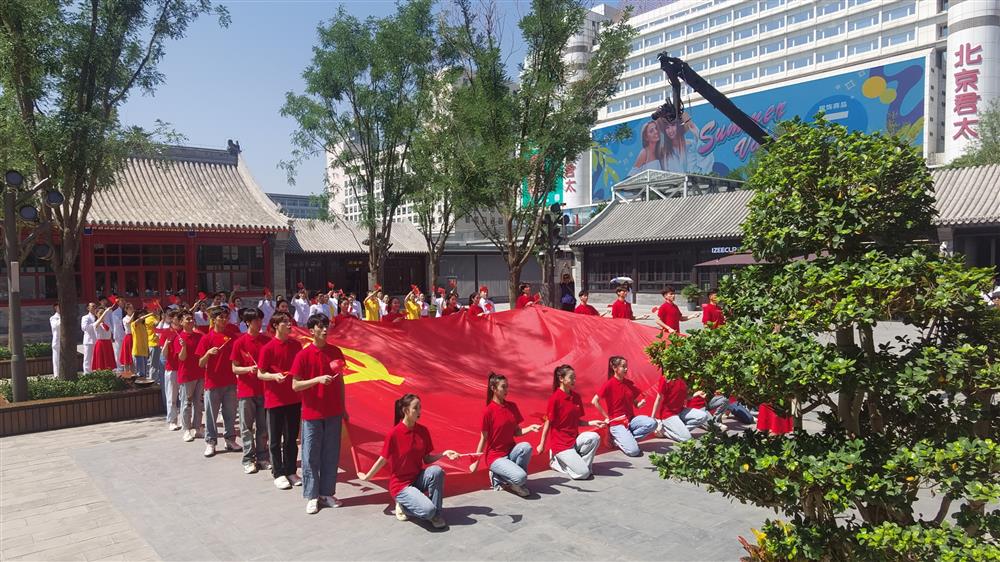
Ulanfu wrote in his memoirs: One evening after dinner, his classmates were resting in the dormitory when Deng Zhongxia and a gentleman with a black flat head, thick eyebrows and hair, wearing rimless glasses, and wearing a gray coarse cotton robe walked in. Everyone thinks this person has a familiar face, as introduced by Deng Zhongxia. This is Comrade Li Dazhao.
Li Dazhao shook hands and greeted the students one by one, asking each of them about their family situation and also about the living conditions of the Mongolian people in their hometown. Li Dazhao's sincere attitude immediately won the trust of the Mongolian youth. They told Li Dazhao about their oppression and exploitation without any worries, one by one. Some students raised their angry voices, like holding a prosecution meeting.
Comrade Li Dazhao's revolutionary guidance to young people such as Ulanfu.
After listening, Li Dazhao asked, "What are the fundamental reasons for the oppression of the Mongolian people?" He advised that the fundamental reason for the oppression and exploitation of the Mongolian people, and even the working masses of all ethnic groups in the country, is the corrupt and incompetent reactionary government. Whether it was the Qing government or the Beiyang warlord government, they surrendered to imperialism externally, colluded with bureaucrats and landlords internally, and carried out inhumane political oppression and economic plunder on people of all ethnic groups
Li Dazhao listed many facts about the oppression of the Mongolian people, telling students to overthrow the corrupt Beiyang warlord government, destroy this old world, and establish a new regime where all ethnic groups in China are the masters of their own affairs.
Ulanfu recalled that it was not until late at night that the students reluctantly bid farewell to Comrade Dazhao. This long talk brought hope to the Mongolian youth wandering in the vast night. Since then, Comrade Dazhao has often sent Deng Zhongxia, Zhao Shiyan, Liu Bozhuang, Li Bohai and other comrades to Mongolian and Tibetan schools to introduce the domestic and foreign situation, publicize the political ideas of the CPC, and constantly improve the consciousness of students.
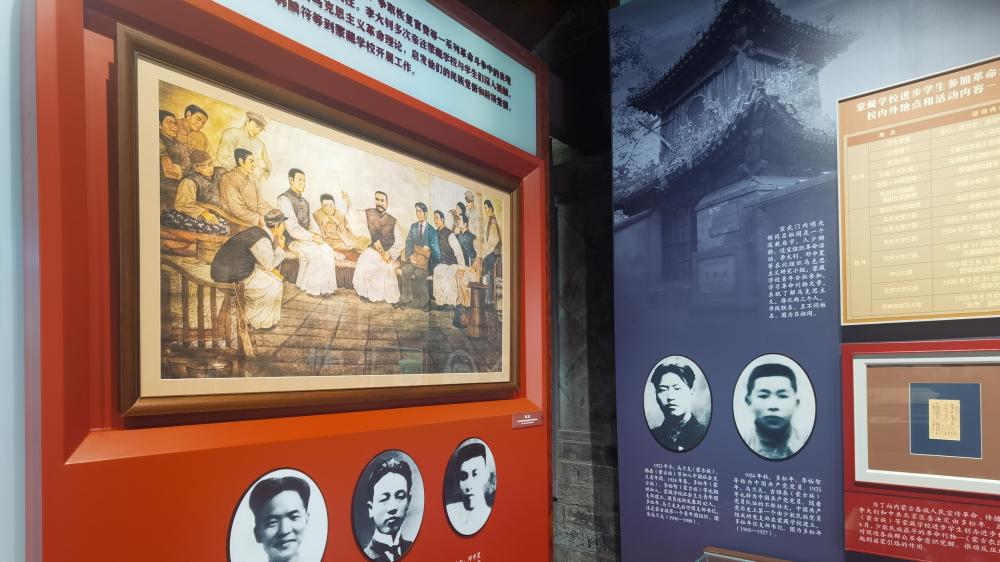
The establishment of the first party branch composed of ethnic minority party members
Since then, ethnic minority students in Mongolian and Tibetan schools have joined the Chinese Socialist Youth League, and some of them later became members of the CPC.
In the spring of 1924, the Socialist Youth League branch of the Mongolian Tibetan School was established, and the number of members gradually increased to 42. Duo Songnian and Ulanfu successively served as the branch secretaries, making this the first Mongolian youth league organization. From 1924 to 1925, Duo Songnian, Li Yuzhi, Wu Lanfu, Ji Yatai and others successively became members of the CPC. With the continuous expansion of the party members, the first party branch composed of ethnic minority party members in the history of the CPC was established in the Mongolian Tibetan School, and served as the secretary of the branch for many years.
The "number one" in the history of Mongolian Tibetan schools.
During this period, the students also organized Marx study groups. The students participate in stages and batches, without naming each other. Some students from other schools also study together, but they do not ask about each other's identity and background. Li Dazhao, Chen Duxiu, Zhao Shiyan, and others have all gone there to explain Marxism to students.
Student Fo Ding recalled: Due to the group being very confidential, I only knew about the comrades in my group and couldn't understand how other comrades participated in the research group and its activities. One afternoon, Deng Zhongxia notified me, Duo Songnian, and Zhao Cheng to participate in the study of the Marxist research group. Instruct us to keep a distance and avoid arousing suspicion from the enemy.

The research team is located in a dilapidated temple inside Xuanwu Gate. Deng Zhongxia led us into a room one after another, which was very dark. Under an oil lamp, there were already five people sitting, two men and three women. After introducing us to the Blackbeard teacher, Deng Zhongxia left, and I still don't know who Blackbeard teacher is. Blackbeard teacher announced discipline: absolutely keep secrets and not ask each other for names. Then each person sent us a small edition of the Communist Manifesto, with portraits of Marx and Engels on the cover. This is the first time the three of us have participated in a Marxist research group.
After a period of study, we joined the party separately. Afterwards, the three of us formed the first three member group of the Communist Party in the Mongolian Tibetan School. Due to strict discipline, I was unaware of the situation of other comrades joining the Party at that time. It was only later that Duo Songnian and I became party promoters in Xicheng District, responsible for distributing materials to relevant comrades, that we found out that some of our classmates, such as Ulanfu, Jiyatai, and Li Yuzhi, had also joined the party.
By 1925, among the 120 students in the Mongolian Tibetan School, there were already over 90 party members and members of the Youth League.
An important window to showcase the great achievements of ethnic work
The revolutionary activities of progressive youth in Mongolian and Tibetan schools have aroused the vigilance of the Beiyang warlord government. In order to protect and further cultivate this group of young people and nurture outstanding ethnic cadres for the Party, after 1925, the Northern Party organization of the Communist Party of China and Li Dazhao sent them in stages and batches to study at Guangzhou Huangpu Military Academy, Moscow Sun Yat sen University and Military Academy in the Soviet Union, and Guangzhou Peasant Movement Training Institute. At the same time, they selected some students such as Li Yuzhi and Ji Yatai to return to Inner Mongolia to carry out work. Through learning, the Marxist theoretical level and revolutionary activity ability of these progressive youth were further improved, and most of them later became the backbone of the CPC leading the revolution in Inner Mongolia.
Certificate of Revolutionary Martyrs of Comrade Duo Songnian.
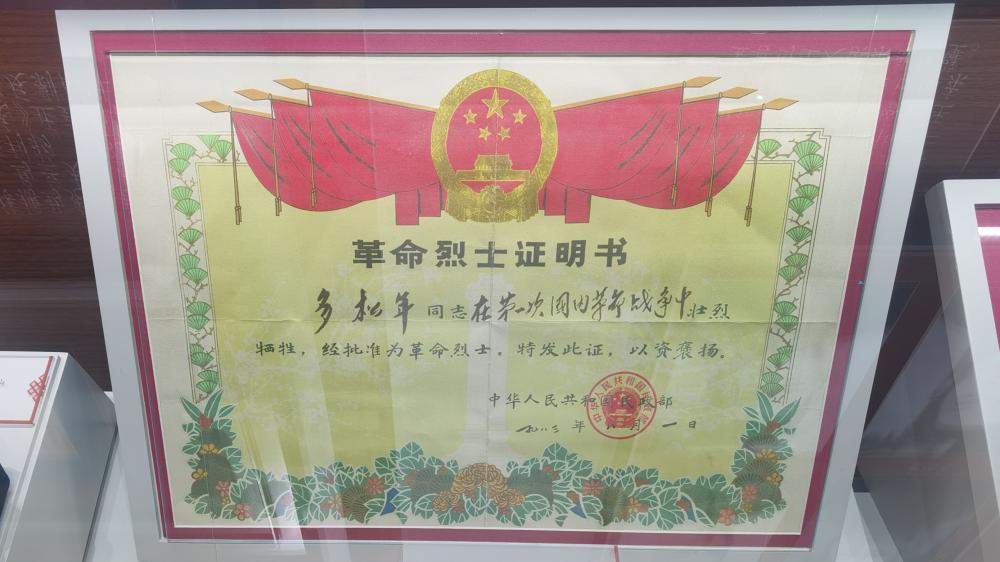
In 1951, the Mongolian Tibetan School merged with the Central Institute for Nationalities and became an affiliated high school of the Central Institute for Nationalities. It continued to operate here until its relocation in 1987. In 1988, Beijing utilized as much resources as possible to explore employment opportunities. The ancient architectural complex on the streets of Xidan Street has built the Ethnic World Shopping Mall, which sells clothing, on the original site.
The business in the Xidan commercial district is becoming increasingly popular, and more merchants are squeezing into the national world. Temporary illegal booths are emerging one after another, gradually surrounding the originally magnificent ancient buildings. In 2006, the Mongolian and Tibetan schools where the Great World of Nationalities is located were listed as national key cultural relics protection units, and the project of vacating shopping malls and restoring cultural relics was put on the agenda.
In May 2013, the National World Shopping Mall was officially closed, and the protection and restoration work of the former site of the Mongolian Tibetan School began. In September 2021, the National Civil Affairs Commission and Beijing signed a cooperation agreement on the protection and utilization of the former site of Mongolian Tibetan schools. In March 2023, the former site of the Mongolian Tibetan School was renovated and reopened to the public through an "exhibition+experience" approach.
The courtyard of the former site of the Mongolian Tibetan School is quaint and peaceful, with new green vegetation. Batch after batch of party members, league members, collectives, or individuals come here to visit and learn. At the theme exhibition of "China's One Pulse, One Heart, Building Dreams", more than 420 photos and more than 280 objects, documents and archives showed the historic achievements of the CPC in uniting and leading the people of all ethnic groups to carry out revolution, construction and reform. The "Special Exhibition on the Former Site of Mongolian and Tibetan Schools" condenses and presents the historical evolution and revolutionary activities of Mongolian and Tibetan schools.
Batch after batch of party members, league members, collectives, or individuals come here to visit and learn.
The reopened site of the Mongolian Tibetan School has become an important window to showcase the great achievements of the Party's ethnic work, an important battlefield to build a shared spiritual home for the Chinese nation, an important place to promote exchanges and integration among various ethnic groups, and an important platform to tell the story of the Chinese national community to the outside world.
